 Your new post is loading...
 Your new post is loading...
...Are you planning projects that member outlets would be able to incorporate into their own websites? Absolutely! All of our interactives are embeddable, and our members and customers already incorporate them into their sites. I’m interested in ways we can customize our data-driven interactives, both for the customer and for the end user. Those efforts are part of our design discussion for the work we’re doing now. I would also like to find more ways to collaborate with other news organizations. AP was born from such cooperation, and it is an important part of our identity. Are the projects the AP works on more often than not driven from the print side, augmenting what’s being written by a reporter or team of reporters? Or do they sometimes originate from the digital side? If it is a case of digitally driving what reporters write, would you like to see a shift to data journalists promoting more original narrative work? More often than not, I’ve found that good data projects start with solid shoe-leather reporting, so most of our data projects have begun with the work of text reporters and editors. But the data work that we do begins before the story is written: exploratory data analysis can discover new angles in the data, and the right visualization can reveal a trend we had missed. We’re really moving away from the model in which visualization or interactive storytelling is an afterthought, an illustration of the story, and toward a model in which this work is central to developing the story and enables us to tell the story in ways impossible for straight text reporting....
Natural disasters, airline crashes — and yes, terrorist bombs — undercut the normalcy of everyday life by bringing death’s whammy to an unexpected place at an unforeseen time. In the hours and days following such catastrophes, journalists work to restore normalcy to the panicked population by explaining how and why the bad thing happened and how to prevent it from happening again. Reporters have been normalizing the abnormal for so long that they’ve created well-worn catastrophe templates to convey their stories. Yesterday, while covering the Boston Marathon bombing, journalists leaned hard again on those templates. First came the sputtering dispatches over radio and television about the calamity. Next up were the on-the-scene broadcast reports, frequently marred by confusion and contradiction, as the press held out hope for survivors but prepared audiences for the worst. Video of the catastrophe was converted by the cable news networks into a perpetual loop, giving the talking heads a wallpaper background to talk over (and giving new viewers just tuning in something graphic to watch)....
Today’s annual report on the State of the News Media shows that new technologies really are pressing journalists to do much more with much less. Last week, we learned that newspaper industry ad revenue was down 7.3 percent this year to its lowest level since 1984 (or 1954, adjusted for inflation). As a result, newsrooms continue to shrink. But The Project For Excellence in Journalism’s report shows us that the needs and demands of the audience are growing and fragmenting. Social media is an important source of news, the report says, but remains smaller and only “supplemental” to other discovery methods like directly visiting a news website, searching the Web or browsing an aggregator....
...At their core, Facebook, Tumblr, and Twitter are sharing networks, not publishing companies. They act as platforms for other people’s content, which can be spread rapidly and massively among their communities. A consequence of being walled gardens that restricts this sharing activity within their own properties, however, is that they give up the right to decide when and how that content breaks free into the wider public discourse. Even though it had success with its partnerships program at placing stories into other forums, Storyboard’s stories always had the whiff of marketing, or what is these days being described as “native advertising.” As we now know, that ultimately did not work out for Tumblr. Going by Fletcher’s comments, perhaps Facebook Stories will meet a similar fate....
A little more than a year ago, BuzzFeed made the leap into the realm of serious journalism. It hired some known journalists and a lot more hungry young writers, expanded its verticals, and announced a plan to create serious content to go alongside the site’s trademark clever lists. Now, with BuzzFeed creating a home for its long reads, building a business vertical and trying to figure out how to expand into breaking and international news, it’s a good time to assess....
Alternative weekly colossus Boston Phoenix cracked and fell this week, ceasing publication after 47 years. Once one of the leading alt-weeklies in the nation, the dead paper leaves behind $1.2 million in debt and roughly $500,000 in assets. ...The advertising shift from newsprint to Web is mirrored by a cultural shift. In my mind, the alt-weekly remains the perfect boredom-alleviation device. Waiting for a subway train? Pull one from your bag and it will entertain you. Your girlfriend is late for your date? The paper will keep you occupied. That beer and bag of nuts not distracting from life’s troubles as you mope on a barstool? The alt-weekly saves the day again. But even a human fossil must concede that the smartphone trumps the alt-weekly as a boredom killer. How does a wedge of newsprint compete with an affordable messaging device that ferries games, social media apps, calendars, news, feature films, scores, coupons and a library’s worth of music and reading material? Ask a young person his opinion and he’ll tell you that nothing says “geezer” like a newspaper, be it daily or alt-weekly. What’s changed, and what probably convinced the Phoenix to exit, is that the papers are no longer a 30 percent (or higher) margin business, and that lost business is not returning. Publishers who hope to survive will have to content themselves with 10 percent margins. They will have to work harder to maintain advertising categories where they still have a comparative advertising advantage, such as food and restaurants, which usually require a face-to-face meeting between an ad representative and an owner to make a sale. It’s a cliché, but I’ll toss it out there anyway: Every newspaper and website needs to compete in the events business. The smarter papers are already there, and if they’re lucky they’ll hit the jackpot the Austin Chronicle has with its decades-old SXSW business. And it doesn’t require much insight to urge alt-weekly publishers to continue building out their Web components....
The grizzled vet and the digital native: Journalism has plenty of room for both to succeed. I spent eight years at AOL and I'll say this: I saw none of the great, all of the bad and some of the good. ... The blood sport during my AOL days was about the future of media companies — who would or wouldn’t survive the digital onslaught. Actually, it was much the same during my time at Newsweek in the 80s (who needed three newsweeklies in a broadcast world). Ditto when I joined The New York Times in the 70s (was the city big enough for both The Post and Daily News). Now, the social Web with its echo chamber turns up the volume daily — and makes it more personal, too. It’s far more about the fate of the individual journalist. That quickly gets down to the paycheck. Will there be one? How much? Who gets it — the “professional” or the pretender? Consumer demand for credible news and information is greater than ever. The problem is the 100-year-old model for producing it is forever broken. That’s why more attention must be paid to finding new ways to produce quality journalism — efficiently, at scale and at a price supported by mobile CPMs, which at best are 50% lower than desktop CPMs, which if you’re lucky come in two-thirds lower than print CPMs. In other words, a high-cost newsroom structure built for the print age will never work in a smartphone or tablet world. A few startups are experimenting with new models — Vox Media, Machinima, Bleacher Report and Storify are a few that I follow. Among traditional media companies, FORBES is the only one I know of charting a new course....
I will never forget Bob Feit, the mad Hungarian who ran the newsroom I landed in right after college. When the news really excited him, he would pound his fist on the rim (a horseshoe-shaped copy desk), then jump on his desk and wave his arms with utter joy. “I love the news,” he would yell. The slot man, a Brit who wolfed down onion sandwiches for lunch, would express mild amusement as he continued to move copy to Carmine, a.k.a. Ace, the gruff-on-the-outside, sweet-on-the-inside teletype operator. I also remember Feit (no one ever called him Bob) because he taught me to write concisely. He would sit to my right, cut my two-sentence news briefs in half, then tell me to fill them up with facts. When I finished, he would do it again. To this day, I write my posts with Feit in mind, knowing he’d easily find words to cut....
|
Guardian digital development editor Joanna Geary answers some questions about GuardianWitness.... ...First up: this was built in two months. The sponsorship pot from EE gave them a budget and time to get the job done, but not necessarily have everything they wanted at launch. She says it's a complete, working system that can be built upon. I suggest the phrase "minimum viable product" to Jo but she suggests that it's a full product - one that will be built on. Do they have aspirations for more integration with social media? Yes, they do. And it's something they're looking at as the system develops. The key part of the development which is invisible to us right now is that the Guardian Witness system is deeply integrated with the Guardian's CMS. Once the content has passed through verification, it's available to the journalists, and they can insert it into a story or liveblog just by inserting an URL, which creates an embedded version of the contribution that links back to the contributor's profile. "The really exciting thing is not what you see now, but what you see when Witness is included in a story," she says. It's a tool to facilitate genuine collaborative working between the journalist and external witnesses. Jo says they'll collaborate with people on the ground, or with expert knowledge, in any way they can - and already do, via phone and other traditional methods. This adds another tool for doing that....
Terrible events such as yesterday’s bombings at the Boston Marathon have always meant “all hands on deck” for news organizations, with staffers pulled off their regular beats to contribute. But the endpoint of the newsgathering and reporting is no longer a front-page package of stories explaining — the best one can — what happened, why it happened and what might be next. Now, there is no endpoint — events are reported in real time, with stories in constant motion, and the front page is a snapshot of an organization’s reporting at the moment when the presses needed to roll. Boston was a reminder of that, and a look at what’s changing in real-time journalism. Through Twitter and various live blogs, I found myself looking over my shoulder at the Boston Globe, the New York Times, Reuters and other news organizations, and was able to make some observations and draw some conclusions....
A round up of all the best insights from the live Q&A, which explored how alternative news sites platforms interact with mainstream news sites... The internet has enabled the proliferation of alternative news sites, such as blogs and community news platforms, providing consumers with a variety of perspectives. In our recent live Q&A, we explored what role these news platforms play in breaking news and how far they impact mainstream news reporting. Here is a selection of views from our recent live Q&A looking at the relationship between alternative news platforms and mainstream news sites.... Great insight... more local, more video, more activism, more news...
Every 30 seconds or so, an algorithm developed by Narrative Science produces a computer-written news story, Wired reports. The articles run on the websites of respected publishers like Forbes, as well as other Internet media powers (many of which are keeping their identities private). Niche news services hire Narrative Science to write updates for their subscribers, be they sports fans, small-cap investors, or fast-food franchise owners. And the articles don’t read like robots wrote them....
Don't be fooled by evangelists of 'free': editorial ethics and real reporting have been blown up along with the business model. Over at Slate the other day, Matthew Yglesias argued that journalism consumers are enjoying a "golden age". Yeah, sort of – in exactly the way looters enjoy an improved standard of living. Problem is, it only stays improved until the store is emptied out.
The news industry has gone from being obscenely profitable to slightly profitable to – at least, in the case of newspapers – largely unprofitable. All of that fantastic content Yglesias was gushing about is paid for by venture capitalists making bad bets, established media companies digging into their savings accounts to pay the bills, displaced workers earning peanuts, amateurs, semi-pros, volunteers and monks.
I would say that the business model is unsustainable, but losing money is not a business model. It is a going-out-of-business model....
If the newspaper industry had theme music in 2013, it might use “Been down so long it looks like up to me,” the much-recycled line from a 1920s blues song. For the first time since the deep recession that began in 2007, newspaper organizations have grounds for a modicum of optimism... Companies have started to experiment in a big way with a variety of new revenue streams and major organizational changes. Some of the bright opportunities – such as offering social marketing services to local businesses – are ventures too new to be measured yet industry-wide. They show signs of stabilizing revenue.... Even halting improvement in the general economy helps the industry. The double whammy of cyclical ad losses on top of secular shift to new media has considerably eased from the worst of the recession from 2007 to 2010. Auto advertising has come back, and some markets, like Miami, are beginning to see recovery in real estate and employment ads as well. All those positives, however, are for the time being mostly promise rather than performance. The most basic indicators have not turned around. The industry is little more than half the size it once was. Considerable dangers persist... So the industry entered 2013 with some positive signs but still dealing with difficult economic realities. The two biggest newspaper developments of the last year – digital paywalls and reduced print frequency – capture that odd mix of expansion and contraction now typical within the industry....
IN JANUARY the New York Times lost its top spot in comScore's ranking of the world's biggest newspaper websites to Britain's Daily Mail. The Times sniffed at the accuracy of comScore's figures, which exaggerate the Mail's online audience by including a personal-finance site that the paper owns. But the battle to be biggest reflects a growing phenomenon: national news publications going global. A mere one-quarter of the Mail's online readers are in Britain. The Guardian, which caters to those who like their news left-leaning and serious in contrast to the Mail's right-wing raciness, has one-third in Britain and another third in America (see charts). Their chief competitors are two American publications: the New York Times, which like the Guardian aims at readers of serious news, and the Huffington Post, which since its launch in 2005 has become the biggest site of the four (it is not in comScore's “newspaper” category). That the HuffPo is beating papers with a history stretching back to the 19th century is a sign of just how differently news works online....
Polis, the journalism think-tank at the LSE, has published an in-depth report looking at the value of social media to journalism, specifically public service broadcasting, and it highlights how Twitter has come to dominate news. As the report puts it, Twitter plays a more important role in newsgathering than Facebook, which is much more about discussion and far less about breaking news. Lyse Doucet, the BBC’s Chief International Correspondent puts it this way: “There is no question, if you are not on Facebook and Twitter, you are not getting the full story”. More telling is the comment from Joanna Carr, editor of BBC Radio 4′s news programme ‘PM’, who said she “wouldn’t hire anybody who doesn’t know how to use Twitter”....
|



 Your new post is loading...
Your new post is loading...




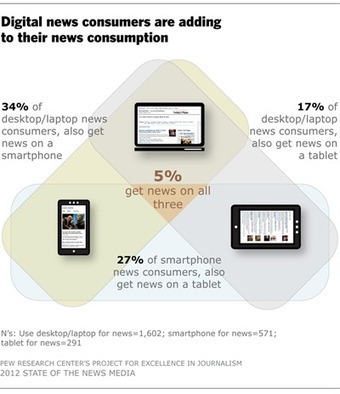
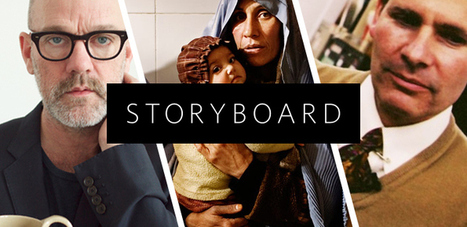




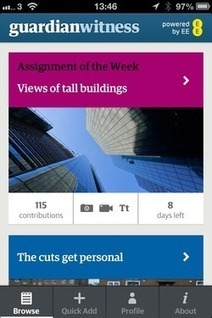


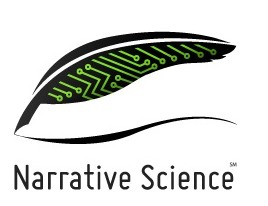

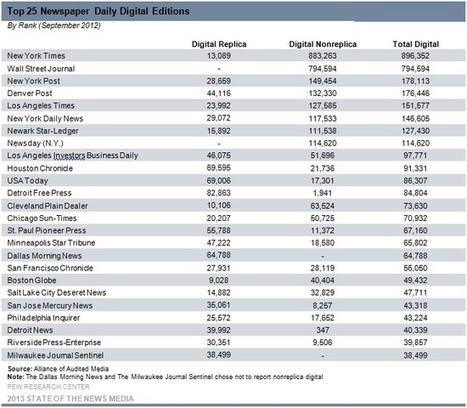
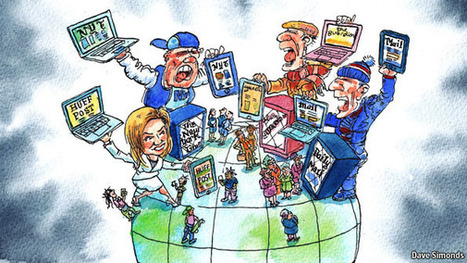






Watch for this trend - more multimedia and more interactive - in news according to the new AP interactive editor...